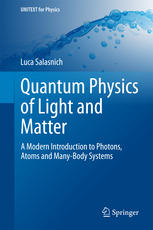

Most ebook files are in PDF format, so you can easily read them using various software such as Foxit Reader or directly on the Google Chrome browser.
Some ebook files are released by publishers in other formats such as .awz, .mobi, .epub, .fb2, etc. You may need to install specific software to read these formats on mobile/PC, such as Calibre.
Please read the tutorial at this link: https://ebookbell.com/faq
We offer FREE conversion to the popular formats you request; however, this may take some time. Therefore, right after payment, please email us, and we will try to provide the service as quickly as possible.
For some exceptional file formats or broken links (if any), please refrain from opening any disputes. Instead, email us first, and we will try to assist within a maximum of 6 hours.
EbookBell Team

0.0
0 reviewsThe book gives an introduction to the field quantization (second quantization) of light and matter with applications to atomic physics. The first chapter briefly reviews the origins of special relativity and quantum mechanics and the basic notions of quantum information theory and quantum statistical mechanics. The second chapter is devoted to the second quantization of the electromagnetic field, while the third chapter shows the consequences of the light field quantization in the description of electromagnetic transitions. In the fourth chapter it is analyzed the spin of the electron, and in particular its derivation from the Dirac equation, while the fifth chapter investigates the effects of external electric and magnetic fields on the atomic spectra (Stark and Zeeman effects). The sixth chapter describes the properties of systems composed by many interacting identical particles by introducing the Hartree-Fock variational method, the density functional theory and the Born-Oppenheimer approximation. Finally, in the seventh chapter it is explained the second quantization of the non-relativistic matter field, i.e. the Schrodinger field, which gives a powerful tool for the investigation of many-body problems and also atomic quantum optics. At the end of each chapter there are several solved problems which can help the students to put into practice the things they learned.